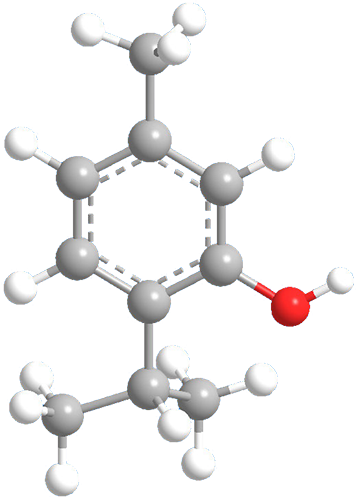

Thymol, or 5-methyl-2-isopropyl-phenol, was a component of a thyme plant preparation used by the ancient Egyptians as a mummy preservative. C. Neumann extracted thymol from thyme oil in 1719, and von M. Lallemand synthesized and characterized it in 1842. It is an antimicrobial used in mouthwashes, expectorants, and nail fungus treatments. It is also used to control mites and molds in honeybee colonies. Three new bee-protection products containing thymol are on the market or will be by 2012.

Learn more about this molecule from CAS, the most authoritative and comprehensive source for chemical information.
Molecule of the Week needs your suggestions!
If your favorite molecule is not in our archive, please send us a message. The molecule can be notable for its current or historical importance or for any quirky reason. Thank you!
Stay Ahead of the Chemistry Curve
Learn how ACS can help you stay ahead in the world of chemistry.

